
The rubella vaccine is mainly for pediatric use; however, it can also be used among adults, if they are not vaccinated and have not yet contracted one of the aforementioned infections.
Belonging to the mandatory vaccines of the pediatric age and available only in the MMR and MPRV vaccine preparations, the rubella vaccine provides for administration by injection, divided into two dosages; in children, these two dosages are dated to the 14th month, the first, and to 5-6 years, the second; in adults, however, they are usually shorter (a period of 4 weeks between one dose and the other is sufficient).
Example of a live attenuated vaccine, the rubella vaccine is a drug with reduced adverse effects (the most common are minor clinical disturbances) and effective.
Currently, vaccination against rubella is subject to the vaccination obligation established in the summer of 2017; consequently, the rubella vaccine is mandatory.
Commercially, the rubella vaccine is only available in combination with measles, mumps and, sometimes, varicella vaccines, in what are vaccine preparations also known as MMR (Measles-Mumps-Rubella) vaccine and MMRV vaccine ( Measles-Mumps-Rubella-Varicella).
Rubella
Rubella is a contagious infectious disease caused by the Rubella virus, a single-stranded RNA virus belonging to the genus Rubivirus and to the family of Togavirus.
Before the advent of mass vaccinations, rubella represented, together with measles, mumps and chicken pox, a "typical infection of childhood"; in particular, it mainly affected individuals between the ages of 5 and 9.
Mainly transmitted by direct contact via saliva and respiratory droplets, rubella presents with red spots all over the body (exanthema), swollen lymph nodes, and sometimes with flu-like symptoms (fever, sore throat, runny nose, fatigue , loss of appetite, etc.) and arthralgia (pain in the joints).
Rubella tends to have a positive outcome; on some unfortunate occasions and in particular among the youngest, however, it can degenerate into complications, such as: encephalitis, otitis and / or thrombocytopenia.
Rubella is a very dangerous condition for unvaccinated or non-immune pregnant women: it could cause spontaneous abortion or abnormalities in fetal development.
Rubella is on the list of exanthematous diseases.
, encephalitis or pneumonia, thrombocytopenia and / or hearing loss.
The rubella vaccination prevents the above eventuality safely for the recipient.
With the mass vaccination campaigns implemented in recent years, rubella cases have decreased significantly; however it should be remembered that the virus still exists and that it is precisely the large number of vaccinated people that prevent it from spreading.
Why take the Rubella Vaccine for Pregnancy?
Individuals who have already been vaccinated and all those who have contracted rubella in the past do not need the rubella vaccine.
and M-M-RVAXPRO, in the MMR vaccine formulation, and Priorix tetra and ProQuad, in the MPRV vaccine formulation. capable of activating the immune system to produce specific antibodies.
In immunology, any foreign substance capable of triggering the immune system is called an antigen.
In the case of attenuated vaccines, the antigens are essentially parts of the infectious agent against which immunity is to be created, deprived, in the laboratory, of the ability to cause the actual correlated infection (NB: provided that the subject is a healthy person, without immune deficiencies).
Antibodies, on the other hand, are proteins that the immune system of the human organism produces whenever it comes into contact with an antigen and which serve to neutralize the latter in the immediate and also in the future, should a second exposure to the same antigen occur.
Thanks to the rubella vaccine, therefore, antibodies against rubella viruses are created, exploiting parts of the latter that are sufficient to stimulate the immune system, but not as sufficient to cause the associated infectious disease.
; usually, the injection site is the upper arm.
A sort of syringe is used for the administration of the rubella vaccine.
Dosage of the Anti Rubella Vaccine

For both young people and adults, the administration of the rubella vaccine is divided into two dosages; this means that the patient, whether child or adult, receives the drug preparation on two separate occasions.
The administration of two doses of rubella vaccine serves to optimize the effects of vaccination: a single administration, in fact, is not always sufficient to develop "immunity against viruses."
According to the vaccination schedule in force in Italy, for children:
- The first dose is dated between the 12th and the 15th month of life (usually it is performed at 14 months);
- The second dose is dated between 5 and 6 years of life.
However, it should be noted that, if for some reason there is a need for a "faster immunization, the second dose could be dated earlier than the above: the" minimum time interval that must separate the two doses of rubella vaccine, in fact , is only 4 weeks, for when it is achieved with the MMR vaccine formulation, and 3 months, for when it is achieved with the MPRV vaccine formulation (NB: it is the varicella vaccine that determines this different timing).
As regards the rubella vaccine in adolescents (over 13 years of age) and adults, the cycle of administration lasts at least 4 weeks: between the first and the second dose, in fact, at least 28 days must elapse.
Can the anti-rubella vaccine be administered together with other vaccines?
The rubella vaccine can be administered together with other vaccines, as it does not interact with the latter.
).However, it should be noted that, most of the time, the adverse effects found are minor clinical disturbances and that the most serious adverse effects are a real rarity.
We must not forget that the risk associated with any type of vaccine, including that against rubella, is decidedly lower than the risk behind the infection against which immunization is to be obtained.
So, in essence, the rubella vaccine can be considered a safe, low-risk drug.
What are the Adverse Effects of Rubella Vaccine?
It is possible to distinguish 4 categories of adverse effects related to the rubella vaccine: the many common, the common, the uncommon and the rare.
As will be seen, the very common and common adverse effects are minor, if not minimal, clinical complaints.
It should be remembered that the rubella vaccine is part of the MMR and MPRV vaccine formulations, which include other vaccines; consequently, the adverse effects subsequently reported are, more precisely, those of MPR and MPRV preparations.
Very Common Adverse Effects of Rubella Vaccine
- Redness and pain at the injection site of the vaccine;
- Mild febrile change;
- Malaise;
- Arthralgia (but only in predisposed adults; it is also more frequent in females).
These are transient disorders, which appear shortly after vaccination and resolve within a few days.
Common Adverse Effects of Rubella Vaccine
- Swelling at the injection site (often a combination of redness and pain)
- Fever above 38 ° C;
- Mild skin rash (red spots on the body)
- Upper respiratory tract infection;
- Arthritis (but only in predisposed adults; moreover, it more often affects the female sex).
Some of these disorders appear a few days after the vaccine; also in this case, these are temporary problems, lasting a few days.
In case of fever above 38 ° C, the intake of an antipyretic such as tachipirina is indicated.
Did you know that ...
Skin rash following the rubella vaccine is observed in 5% of vaccinated subjects.
Uncommon Adverse Effects of Rubella Vaccine
- Middle ear infection;
- Swollen lymph glands (glands in the neck, armpit or groin)
- Loss of appetite
- Nervousness and unusual crying;
- Insomnia;
- Redness, irritation and watery eyes (conjunctivitis);
- Bronchitis;
- Cough;
- Swelling of the parotid glands (near the ears)
- Diarrhea and vomiting.
These are disorders that affect 1% of vaccinated subjects.
Rare Adverse Effects of Rubella Vaccine
- Convulsions accompanied by fever;
- Allergic reaction to one of the components of the vaccine.
These are clinically relevant disorders, as they can have serious consequences; however, it must be remembered that these are very rare phenomena: according to statistics, they would affect no more than 0.1% of vaccinated subjects.
How to recognize allergic reactions to rubella vaccine?
Any allergies to the rubella vaccine occur within minutes of vaccination (which is why parents, after administering the preparation, are asked to stay another 20-30 minutes at the vaccine center) and include symptoms and signs such as: hives, breathing difficulties, swelling of the face, tachycardia and / or paleness.
After the rubella vaccine, in the presence of symptoms or signs of an allergic reaction, it is good to contact a doctor immediately or go to the nearest hospital.
Does Rubella Vaccine Cause Autism?
It has been unequivocally demonstrated that MMR and MMRV vaccines (hence also the rubella vaccine) do not cause autism.
The false belief that the aforementioned vaccines are a possible cause of autism is the result of a study conducted in 1998 by Dr. Andrew Wakefield and fully discredited by subsequent research.
For false information published in 1998, Wakefield was expelled from the British medical order, to which he belonged.
The rubella vaccine is also contraindicated in pregnant women (who, however, can freely provide for vaccination after the happy event).
When to postpone the Rubella Vaccine?
The rubella vaccine is a practice to be postponed to another date in the presence of a condition characterized by fever or general disturbances that the treating doctor considers clinically important.
On the other hand, there is no need to postpone it if the recipient candidate has a common cold (however, it is still a good idea to inform the doctor of the present situation).
Waiting times for pregnancy after the rubella vaccine

Before trying to become pregnant, a fertile woman subjected to the rubella vaccine in adulthood should allow at least one month to pass after the end of the course of administration; in practical terms, it can begin to search for pregnancy at least one month after the second dose of rubella vaccine.
A fertile woman preparing to get the rubella vaccine will have to wait at least two months before trying to become pregnant: a minimum month between the first and second dose plus at least another month after the second dose.

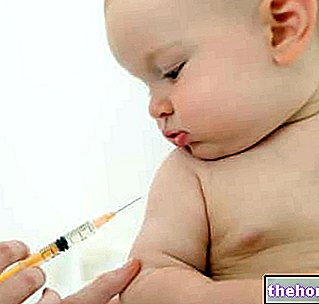
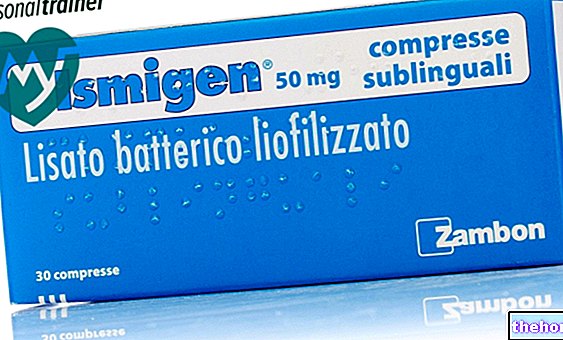
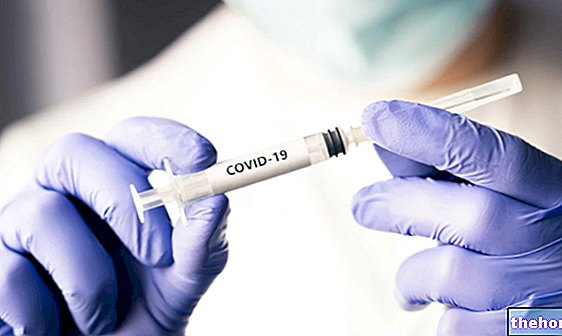
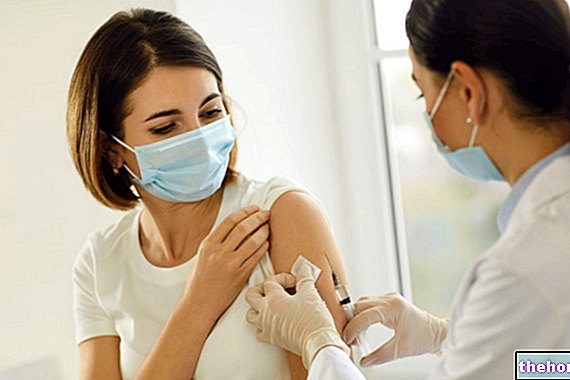

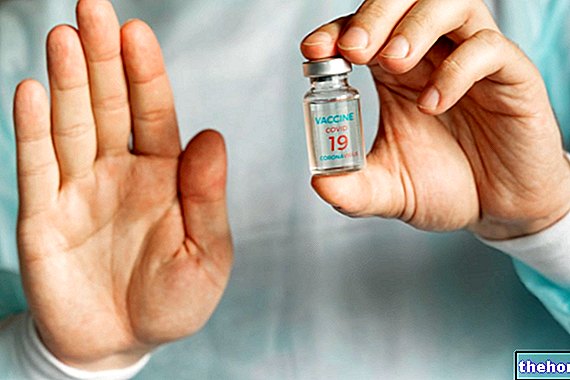
















-nelle-carni-di-maiale.jpg)




